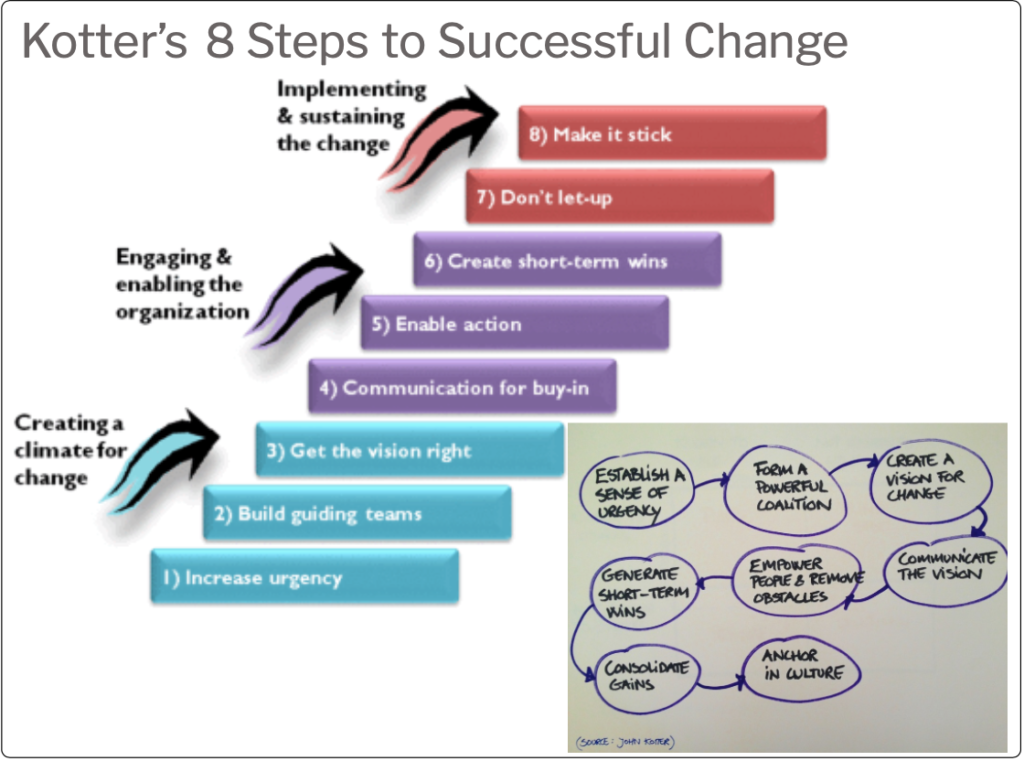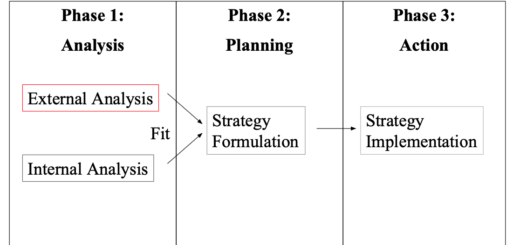Kotter’s 8 Steps to Successful Change

Kotter’s 8 Steps to Successful Change is a model developed by John Kotter to help organizations successfully implement changes. The model consists of eight steps that organizations should follow to create a successful change management process. The eight steps are:
- Create a sense of urgency: Leaders should create a sense of urgency among employees to recognize the need for change and the benefits of it. This can be done by highlighting the risks of inaction and the opportunities that the change presents.
- Form a powerful coalition: Leaders should form a team of influential people who have the authority and credibility to lead the change effort. This team should be diverse, representing different departments and levels of the organization.
- Create a vision for change: Leaders should create a clear and compelling vision for the change effort that outlines the benefits and outcomes of the change. The vision should be communicated effectively to all employees and stakeholders.
- Communicate the vision: Leaders should communicate the vision regularly and consistently, using various channels and methods to ensure that it is understood by everyone.
- Empower others to act on the vision: Leaders should give employees the tools and resources they need to implement the change, including training, support, and autonomy to make decisions.
- Create short-term wins: Leaders should set achievable goals and create short-term wins to build momentum and keep employees motivated. These wins should be communicated and celebrated.
- Consolidate gains and produce more change: Leaders should use the momentum of the short-term wins to tackle more complex challenges and make more significant changes.
- Anchor new approaches in the organization’s culture: Leaders should ensure that the change becomes a part of the organization’s culture and is sustained over time. This can be done by integrating the change into the company’s values, systems, and processes.
By following these eight steps, organizations can increase the chances of a successful change implementation and achieve long-term benefits.





